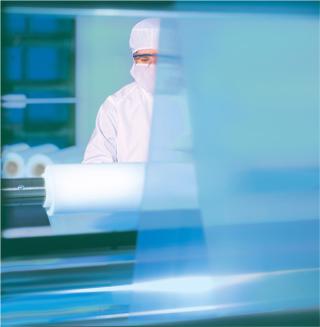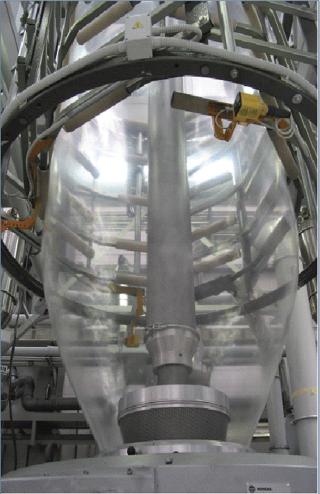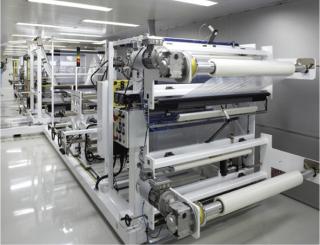How Plastics Are MadeHow Plastics Are Made
April 1, 2014
The term plastics includes materials composed of various elements such as carbon, hydrogen, oxygen, nitrogen, chlorine, and sulfur. Plastics typically have high molecular weight, meaning that each molecule can have thousands of atoms bound together. Naturally occurring materials, such as wood, horn, and rosin, are also composed of molecules of high molecular weight.
Manufactured or synthetic plastics are often designed to mimic the properties of natural materials. In fact, some of the earliest plastics were developed to replace scarce natural polymeric materials such as ivory. As billiards grew in popularity through the 1880s, the cost of ivory billiard balls increased. So a challenge went out to develop a synthetic alternative. John Wesley Hyatt invented a plastic alternative to ivory for billiard balls in 1869 called nitrocellulose (US patent 50359, the first American patent for billiard balls). It became the commercial Celluloid brand in 1870.
Plastics (polymers) are produced by conversion of monomers into polymers. This is familiar to most people in the biopharmaceutical world given that many proteins occur as multimers, and all of them are biopolymers. If you remember your Latin, mono means one; thus a monomer is one mer (a substance of a particular class or type). And poly means many; thus polymer means many mers. When the monomers are connected to each other, the result is a long chain. Most plastics are based on the carbon atom. Silicones, which are based on the silicon atom, are an exception. The most common plastic made in the world today is polyethylene, or as the Latins would say, many ethylenes. Using this nomenclature, we can determine the monomers used to make many, but not all common plastics.
Plastics in the Supply Chain
This is the introduction to a series on supply-chain issues relevant to single-use components. We thought that the most logical place to begin such a series would be here, where the films and moldings that make up your single-use systems are made.
This first installment looks at basic processes for making such materials. We have some ideas for future articles, but what else would you like to know? Please send questions/ suggestions to the author (contact information is at the end of this article), or to editor in chief Anne Montgomery, [email protected].
For example, polypropylene, polystyrene, and polyvinylchloride are made from propylene, styrene, and vinyl chloride monomers, respectively. Historically many of the monomers used to make plastics have been derived from oil and natural gas. In fact, many monomers were originally by products of oil and natural gas processing. Instead of burning them, other uses were discovered to create value out of them in the form of plastics.
With prices rising for oil and natural gas, greater attention has been placed on finding biological sources of monomers. For example, polylactic acid or PLA is a polymer that can be derived from a biological source. In the case of PLA, the monomer is lactic acid, derived from feeding a sugar source in a fermentation reaction to the right microorganism that produces lactic acid. The lactic acid is separated and reacted to form PLA in basically the same way a hydrocarbon-based monomer would be processed.

Types of Additives Plastic on the roll
Monomers determine the plastic, depending on the base properties required. A manufacturer determines which properties are needed from the plastic to meet product requirements. Once those properties are determined, a plastic is chosen. With the plastic determined, a monomer is fixed. With the monomer determined, the source used to derive that monomer is chosen.
This is obviously very simplified, but the point is that plastics are chosen for their properties specific to the products in which they will be used. They are not typically chosen based on the source of their monomers. Most plastics can be made from biological sources. However, the cost of deriving monomers from biobased sources is prohibitive for most plastics at this time. Here lies a wonderful business opportunity though. As large companies like Walmart and P&G make commitments to increasing the products and packaging they sell from biobased sources, they will look to innovators who can supply cost-effective alternatives.
Types of Additives
Antimicrobials used for shower curtains and an expanding list of items
Antioxidants for plastic processing and outside applications requiring weathering resistance
Antistats to reduce dust collection by static electricity attraction
Colorants for coloring or tinting plastic parts
Fibers and minerals such as glass fibers or calcium carbonate to stiffen polymers
Flame retardants to meet safety requirements from organizations such as the Underwriters Laboratories (UL).
Foaming agents for expanding plastics for packaging
Lubricants used for making many polymers so they will not stick to molds and dies during processing
Plasticizers mainly used with PVC in tubing, wire insulation, flooring, and some films

Types of Additives The film-blowing process
What Plastic Is Right for Your Application?
Entire books have been written on the topic of what plastics are right for various applications. In basic terms, the key is to determine the needed properties for your application. Once you realize you can't have a plastic that is as strong as steel, as light as air, and as cheap as dirt, you are ready to think realistically about your needs.
Do you need crystal clarity? Do you need flexibility? Do you need rigidity? Do you need to withstand high-heat situations? Do you need a plastic that serves as a barrier to oxygen or CO2? Do you need to be able to sterilize the plastic item? If so, by what method? Do you need a film or bag? Do you need a complex injection molded part? Does it need to be any certain color? Does it need to be tough or just the opposite — you might actually need it to be breakable. You will need to ask these questions and many, many others. The answers will lead you to the right plastic or combination of plastics for your particular application.
Some plastics such as EVOH, PVDC, and EVA are rarely used by themselves. Instead the properties you desire determine their use, such as providing barrier properties. In this case, EVOH and PVDC are used as thin layers in a complex film structure. To save money when building the film structure, companies often add layers of polyethylene. If a certain amount of rigidity is needed (as in for a stand-up pouch), a layer or two of polyamide (Nylon) or polyester (PET) are added to the film structure. Because not all plastics are compatible with each other, a “tie layer” of EVA is often needed to help the layers stick together. To the naked eye the resulting film looks like one single extruded piece of plastic, but the reality is that it could be many layers of different plastics.
Once you've decided on the right plastic for your application, you need to consider what additives are allowed or appropriate.
Additives
A number of additives are commonly used in almost all plastics. For an industry that is very focused on how biologically active a given plastic is, understanding the additives and the options from various suppliers is critical. The inclusion of additives may impart specific properties to plastics. Some polymers incorporate additives during manufacture. Other polymers include additives during processing into their finished parts.
Additives are incorporated into polymers to alter and improve basic mechanical, physical, or chemical properties. Additives are also used to protect polymers from the degrading effects of light, heat, or bacteria; to change such polymer processing properties such as melt flow; to provide product color; and to provide special characteristics such as improved surface appearance, reduced friction, and flame retardancy. See the “Types of Additives” box for definitions.
Processing Methods
A number of different processing methods are used to convert polymers into finished products.
Extrusion: This continuous process is used to produce films, sheets, profiles, tubes, and pipes. Plastic material as granules, pellets, or powder is first loaded into a hopper and then fed into a long, heated chamber through which it is moved by the action of a continuously revolving screw. The chamber is a cylinder and is referred to as an extruder. Extruders can have one or two revolving screws. The plastic is melted by the mechanical work of the screw and the heat from the extruder wall. At the end of the heated chamber, the molten plastic is forced out through a small opening called a die to form the shape of the finished product. As the plastic is extruded from the die, it is fed onto a conveyor belt for cooling or onto rollers for cooling or by immersion in water for cooling.
The operation's principle is the same as that of a meat mincer but with added heaters in the wall of the extruder and cooling of the product. Examples of extruded products include lawn edging, pipe, film, coated paper, insulation on electrical wires, gutter and down spouting, plastic lumber, and window trim.
Film Blowing: This process continuously extrudes vertically a ring of semimolten polymer in an upward direction, like a fountain. A bubble of air is maintained that stretches the plastic axially and radially into a tube many times the diameter of the ring. The diameter of the tube depends on the plastic being processed and the processing conditions. The tube is cooled by air and is nipped and wound continuously as a flattened tube. It can be processed to form bags or slit to form rolls of film with thicknesses of 0.0003–0.005 inches thick. Multiple layers of different resins can be used to make the tube.
Injection Molding: This process can produce intricate three-dimensional parts of high quality and great reproducibility. In injection molding plastic material is fed into a hopper, which feeds into an extruder where the plastic begins to melt. The extruder screw pushes the molten plastic through the heating chamber at a high temperature that melts the material. The molten plastic is collected into a chamber and then pushed into the mold using very high pressure. The high pressure is needed ensure that the mold is completely filled. Once the plastic cools to a solid, the mold opens and the finished product is ejected.
This process is used to make such items as yogurt containers, bottle caps, toys, electronic housings, and medical testing trays. Special catalysts can be added to create thermoset plastic products during processing, such as cured silicone rubber parts. Injection molding is a discontinuous process because the parts are formed in molds and must be cooled or cured before being removed. The economics are determined by how many parts can be made per cycle and how short the cycles can be.

More Definitions Film manufacturing
Blow Molding: Blow molding is a process used in conjunction with extrusion or injection molding. In one form, extrusion blow molding, the die forms a continuous semimolten tube of thermoplastic material. A chilled mold is clamped around the tube, and compressed air is then blown into the tube to conform it to the interior of the mold and solidify the stretched tube. Overall, the goal is to produce a uniform melt, form it into a tube with the desired cross section, and blow it into the exact shape of the product. This process is used to manufacture hollow plastic products. Its principal advantage is its ability to produce hollow shapes without having to join two or more separately injection-molded parts. This method is used to make items such as commercial drums and milk bottles. Another blow-molding technique is to injection mold an intermediate shape called a preform and then to heat that preform and blow the heat-softened plastic into the final shape in a chilled mold. This is the process to make carbonated soft-drink bottles.
More Definitions
Thermoplastics can be melted and cooled over and over. Most common plastics used in consumer applications are thermoplastic.
Thermoset plastics form into a shape, are fixed in shape, and therefore cannot be melted. Tires and circuit boards are examples of thermosets.
Rotational Molding: Rotational molding consists of a mold mounted on a machine capable of rotating on two axes simultaneously. Solid or liquid resin is placed within the mold and heat is applied. Rotation distributes the plastic into a uniform coating on the inside of the mold. Then the mold is cooled until the plastic part cools and hardens. This process is used to make hollow configurations. Common rotationally molded products include shipping drums, storage tanks, and some consumer furniture and toys.
Compression Molding: This process has a prepared volume of plastic placed into a mold cavity, and then a second mold or plug is applied to squeeze the plastic into the desired shape. The plastic can be a semicured thermoset, such as an automobile tire, or a thermoplastic or a mat of thermoset resin and long glass fibers, such as for a boat hull. (See the “More Definitions” box.) Compression molding can be automated or require considerable hand labor. Transfer molding is a refinement of compression molding. Transfer molding is used to encapsulate parts, such as for semiconductor manufacturing
Thermoforming: Films or thicker sheets of plastic are heated to soften them, and then the soft material is pulled by vacuum or pushed by pressure to conform to a mold or pressed with a plug into a mold. Parts are thermoformed either from cut pieces of thick sheet (>0.100 inches) or from rolls of thin sheet. The finished parts are cut from the sheet, and the scrap sheet material is recycled for manufacture of new sheet. The process can be automated for high-volume production of high-volume containers or can be a simple hand labor process to make individual craft items.
Planning Ahead
This article touches only the very basics of plastics. Please let us know which topics related to plastics and supply-chain concerns that you would like BPI to address in future issues.
Author Details
Tony Kingsbury is founder and president of TKingsbury LLC, a consulting practice specializing in helping companies and organization improve the sustainability of their plastics and chemicals; [email protected].
You May Also Like






